Protecting bird tables
Unfortunately, a house-like bird table fitted to a fence is the most common version in this country. The location is good for birds and convenient for refilling it with seed, but is also ideal for cats. Cats are able to climb up to them very quickly and often surprise birds that are busy eating. That’s why a fence is not recommended for a bird table. (By the way, such bird tables aren’t recommended from the viewpoint of the transmission of diseases between birds.)
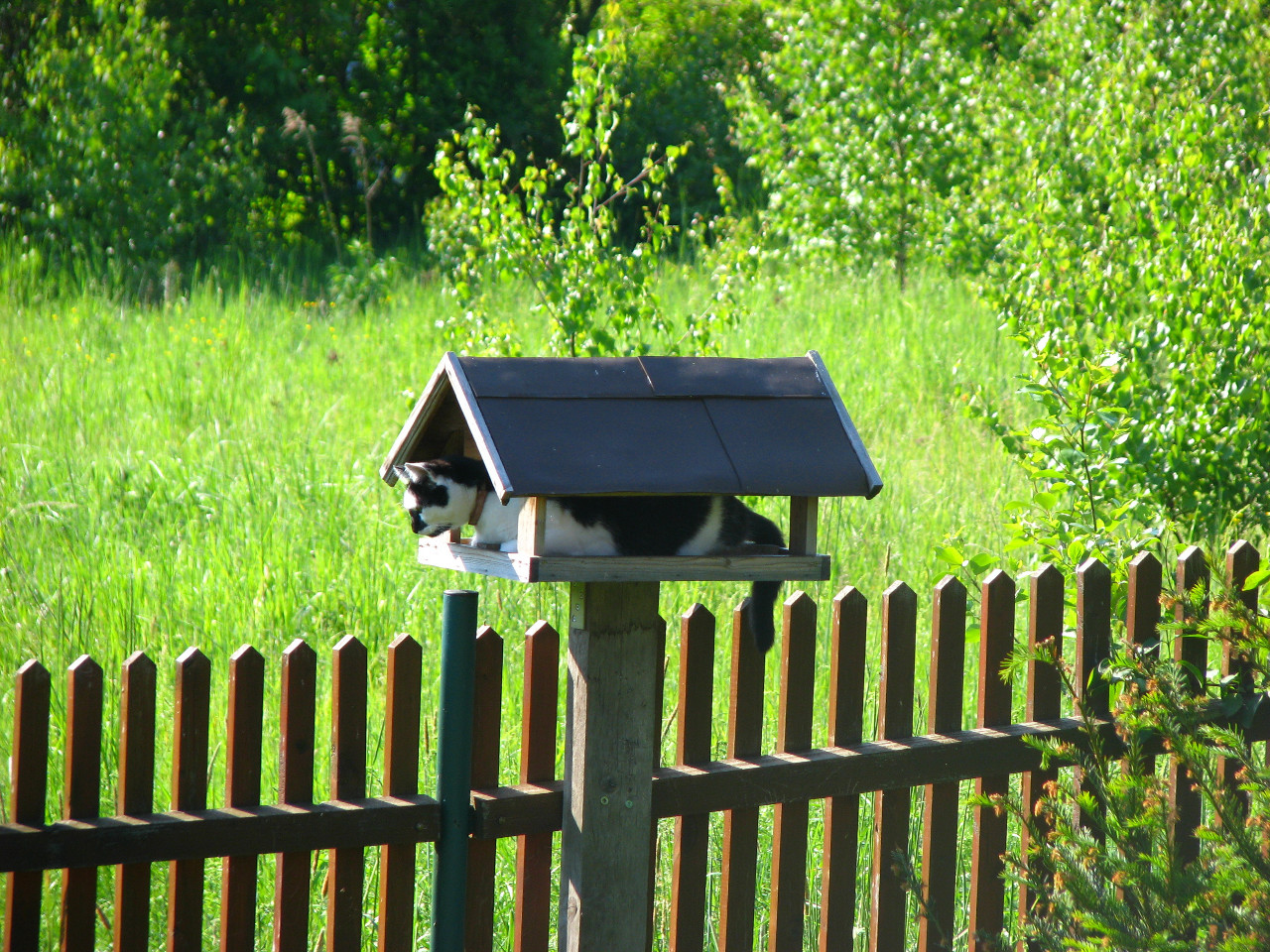
A bird table for birds or cats?
It’s a much better idea to hang a bird table from the branch of a tree, ideally as far away from the trunk as possible and, of course, at a height that doesn’t allow a cat to leap off the ground to it. It should be remembered that the thinner the branch, the less accessible it is to a cat or even a marten.

A hanging bird table is very difficult to reach for predators. Photograph by: Wildlife World
To protect birds as much as possible, a hanging bird table can be combined with a product called Cat Deterrent. The system is effective at protecting a bird table on a tree. It’s simple to construct an obstacle around the trunk from individual pieces of wire that prevents cats from climbing above the item. Each wire element is covered at the tip by a piece of plastic, so there is no risk of injury to the cat if it tries to get beyond it. It can be fitted to trees with any size of trunk. The device stays in the tree since the trunk usually extends downwards. Alternatively, it can be secured by wire.
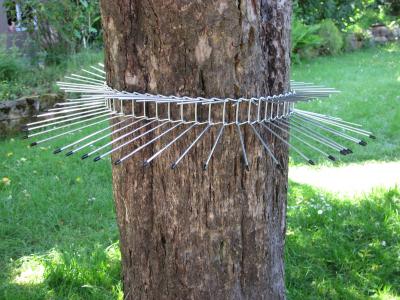
That’s not a cat can get past it. Photograph by: Schwegler
Another option is to hang a bird table on the wall of a house or a shed from a hook. There is no chance for a cat to climb up the vertical wall of a house.
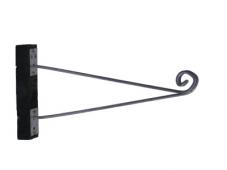
A hook to hang a bird table on a wall. Photograph by: Schwegler
A window-mounted bird table affords a great view of the birds that visit it from inside a home, while also keeping it a safe distance from predators (except windows on the ground floor with a ledge cats can get to).

A window-mounted bird table Photograph by: Wildlife World
Some species don’t come to bird tables; instead, they hop around on the ground below looking for fallen food. One way of protecting these from surprise attack by cats is to place the bird table away from trees or shrubs in which they can lurk. This will give the birds a few metres head start over a predator.

Birds should have a good view around the bird table. Drawing credit: Schwegler
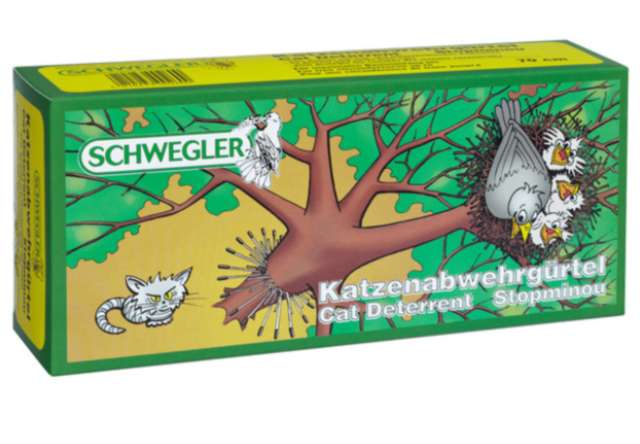
You can shop for Cat Deterrent HERE.
Protecting nesting boxes
Watch out for predators pouncing from nearby trees.
For example, a box installed on a long plank attached to a fence or tree trunk may be the solution. If such a plank extends beyond the fence or the highest branches of a tree sufficiently, it’s going to be quite a challenge for cats to get to the nesting box, and only the most skilful or hungry will try. It is also safe to install a nesting box directly on the wall of a house. Cats can’t climb up smooth walls.
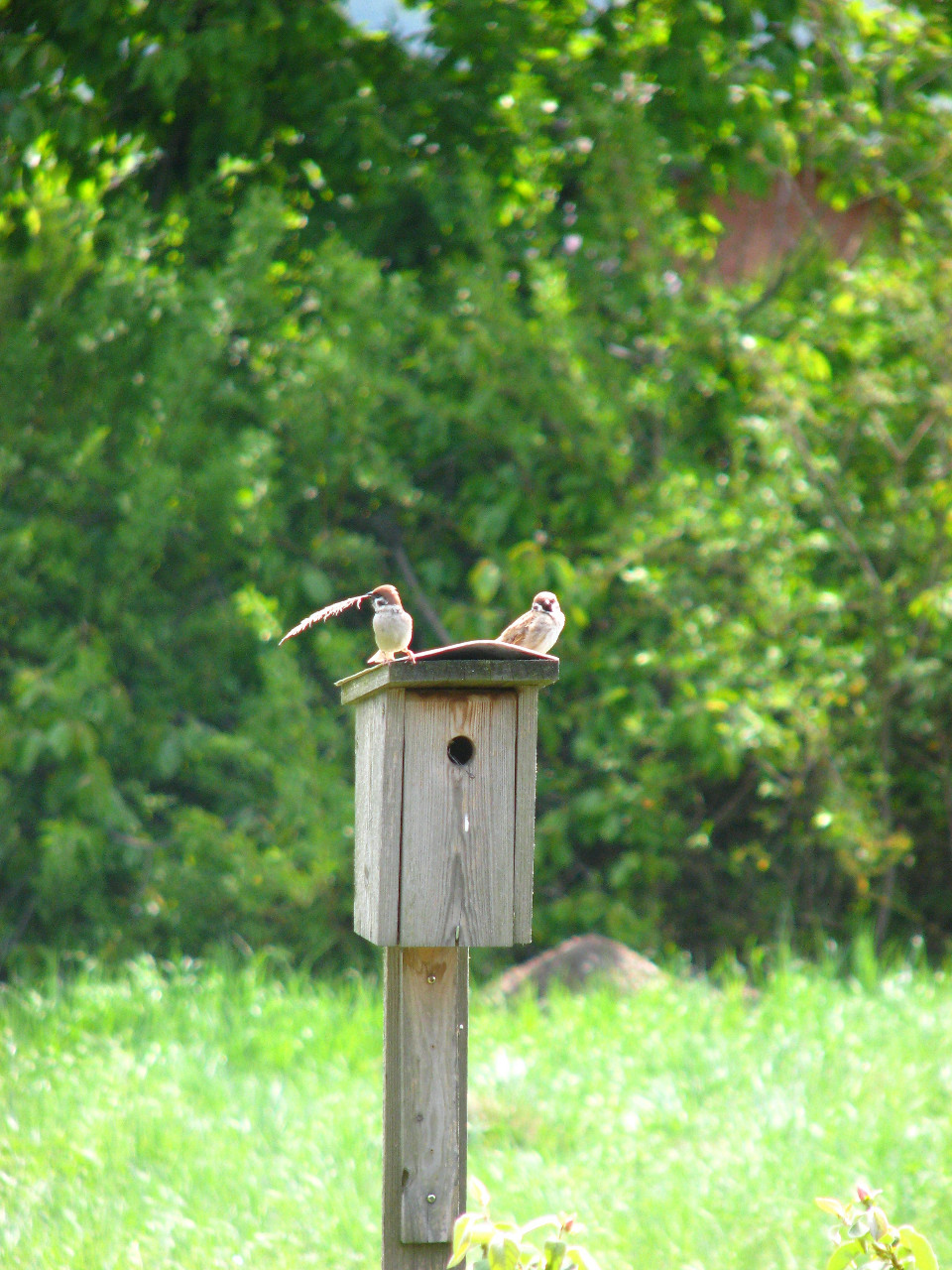
A typical wooden nesting box installed on a long plank.
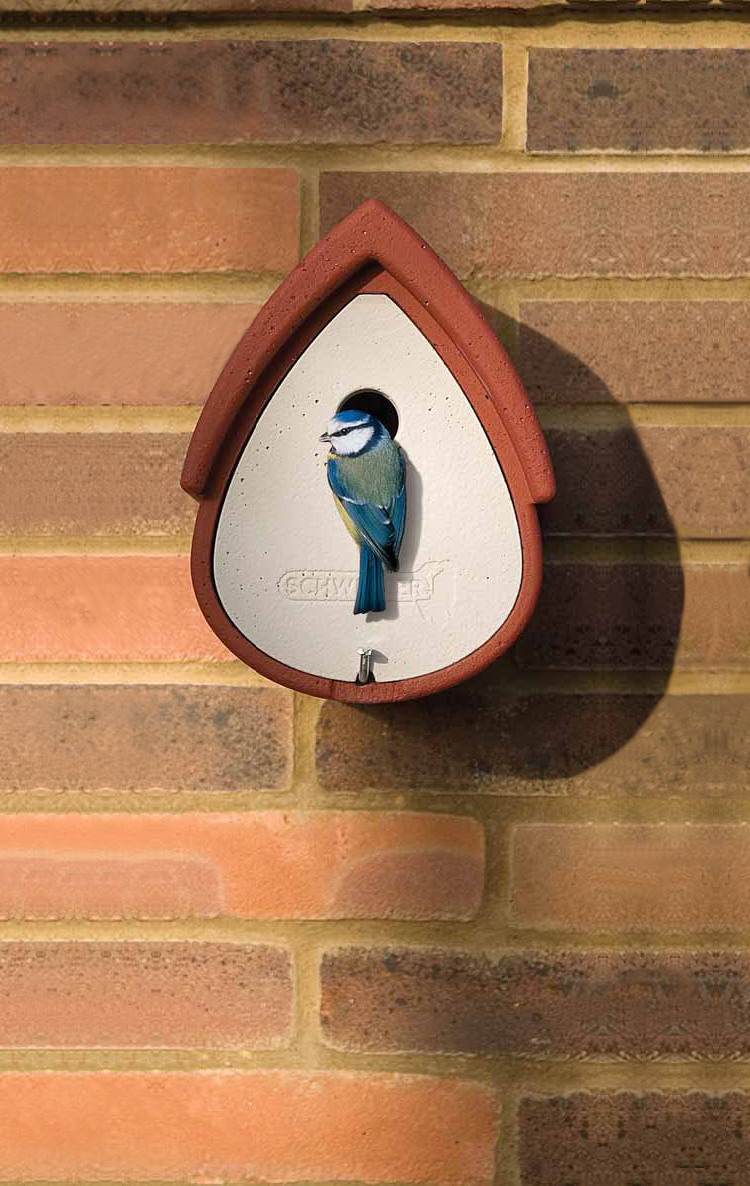
A nesting box fitted to the wall of a house. Photograph by: Schwegler
Other products that offer protection are available through Schwegler and include wood-concrete nesting boxes, specially designed to protect against predators. Produced and developed in collaboration with ornithologists, these make use of a unique mixture of sawdust, cement and natural bonding materials. This not only ensures the extreme durability of the products – a minimum service life of an incredible 25 years or so, but also allows, unlike wood-based options, box shapes that are well suited to birds during nesting and protection from predators.
For example, the 2GR nesting box model provides maximum protection. The shape of the front prevents access by cats and martens. Its attachment system is innovative, as the box can be hung from a branch, further complicating matters for cats and martens. The egg-shaped entrance hole allows sufficient light inside for nests to be built low down, meaning small carnivores are unable to reach it.

2GR Nesting Box Photograph by: Schwegler
If visits by cats and other predators are unlikely, the 2M nesting box is a good choice, with its very steep roof angle. This is fitted to branches a distance from the tree’s trunk. This product makes it difficult for predators to catch the parents and chicks since it’s not possible for them to sit on the roof and wait for the prey.
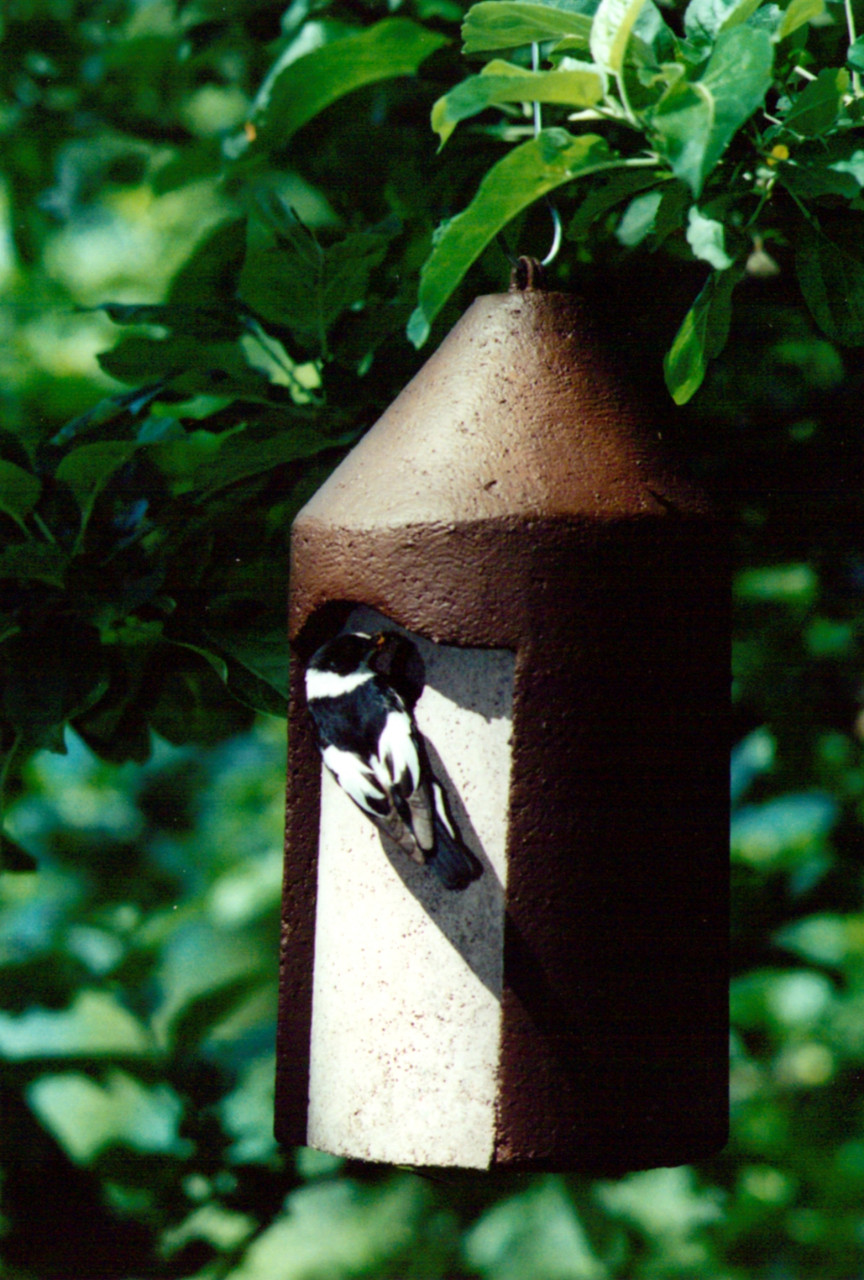
The angle of the roof is such that no carnivore is able to sit and wait for their prey on top of the box. Photograph by: Schwegler
It should be noted that, among other advantages, wood/concrete boxes can’t be damaged by spotted woodpeckers that would otherwise peck holes in the outer case when young are present inside.
Both boxes feature a removable front panel, and entrances of different diameter of are available to suit various species.
The 3SV nesting box is specially designed to protect against predators. Once again, the shape does not allow a cat to reach the chicks inside.
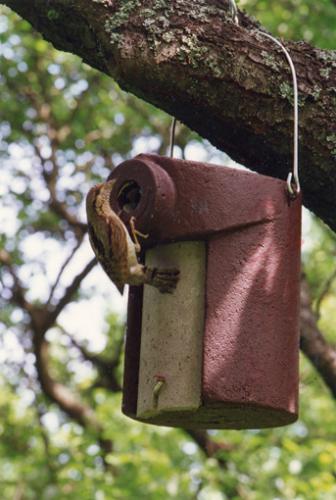
No carnivore is able to enter. Credit (photograph & drawing): Schwegler
Protection is also needed for birds that prefer open-fronted nest boxes. Even these can be designed and, ultimately, placed in such a way that the nest is protected from predators.
The open-fronted 2HW nesting box is suitable for fixture to a branch or a wall. Its elongated shape and internal partition allow parents to make their nest at the back of the box, where the young birds are well protected from predators.
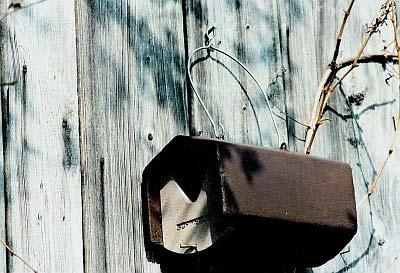
Elongated, open-fronted nesting box with a safety partition. Photograph by: Schwegler
The deep 1N nesting box provides protection through its front panel that boasts two egg-shaped entrances. Here, too, there is an internal partition for protection. The entrances are large enough to let sufficient light inside, but their size does not allow any cat to get to the nest. Anyway, the best places to fix it are on a branch or the wall of a house.
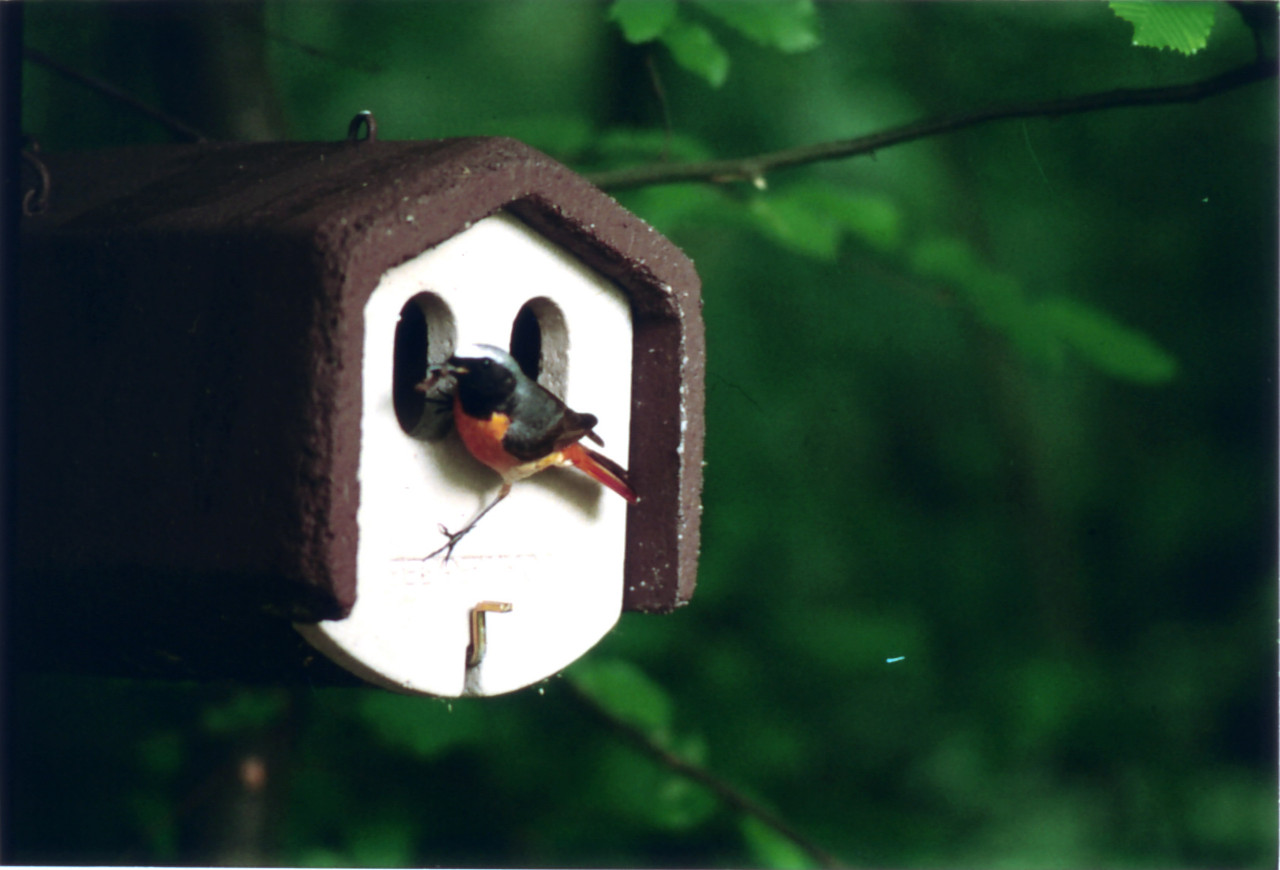
A nesting box with the same design as above but different entrance holes. Photograph by: Schwegler
At the end of this review, it’s necessary to draw attention to one fatal flaw of home-made nesting boxes. Very often, they feature perches. A typical aspect of many bird boxes, perches make birds feel right at home. Isn’t this is the idea? To make them as comfortable as possible? No, it’s a terrible mistake! Birds don’t need them. However, a perch is a perk for predators, as clearly depicted below. So, please, don’t put a perch on your bird box. Thanks for reading.
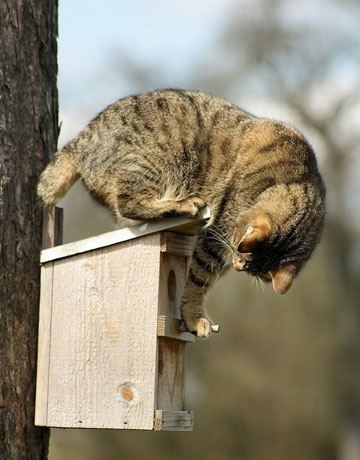
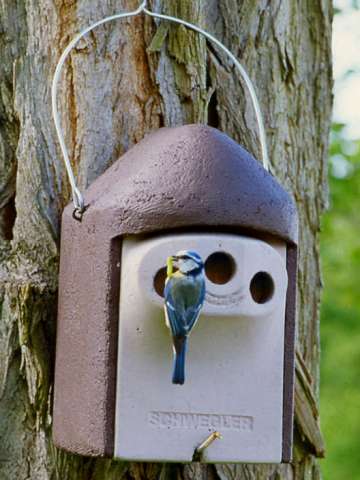
Bird boxes with protection against predators can be bought HERE.
Buy items to protect against predators HERE.
